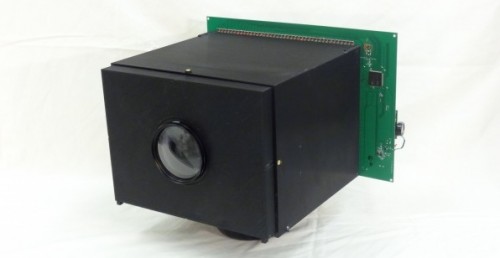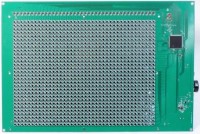
Say cheese: is this self-powered camera the future of photography? (Courtesy: Computer Vision Laboratory, Columbia Engineering)
By Ian Randall
With a smartphone in every pocket and remotely operated cameras on every street corner, digital cameras are a ubiquitous part of life. Last year alone an estimated two billion cameras of various sorts were sold worldwide – with such sales likely to increase. While personal cameras are easily recharged, many new remote applications require smaller and longer-lasting power supplies.
But what if your camera could self-power while you take selfies? This is the idea put forward by Shree Nayar and his colleagues at Columbia University in New York City, who have created the first ever completely self-powered video camera.
The idea makes perfect sense because the pixels that make up the image sensors in digital cameras are essentially the same as those used in solar panels. Both use photodiodes, which are semiconductor-based components that convert incident light into electric current. In cameras, photodiodes are used in “photoconductive mode”, which allows them to measure the amount of light falling onto each pixel so a larger image can be constructed. In solar panels, however, photodiodes are used in “photovoltaic mode”, where they convert light directly into electrical energy.
Combining these two activities, the researchers have developed a prototype camera whose pixels – of which there are 30 × 40 – alternate between the two modes. Each cycle begins with a capturing mode, in which the pixels record an image. This is followed by an energy-harvesting mode in which the pixels charge the camera’s power supply. The length of the cycle allows the camera to take pictures indefinitely at one image per second.

Running on empty: the prototype image sensor. (Courtesy: Computer Vision Laboratory, Columbia Engineering)
The device does have some limitations. Ideally the camera needs a subject that is illuminated with at least 300 lux, which corresponds to a well-lit room. However, the researchers have developed an adaptive algorithm that varies the image-acquisition rate based on the available lighting and the camera’s charge.
While the prototype camera uses a capacitor to store energy, Nayar notes that the device could also be used in conjunction with a rechargeable battery – or even as an integrated component in a larger device, such as a mobile phone, for which it could help to generate power.
“We believe our results are a significant step forward in developing an entirely new generation of cameras that can function for a very long duration – ideally, forever – without being externally powered,” says Nayar. Certainly, the potential range of applications for self-powered cameras is very broad and includes not only personal devices, but also as a part of sensor networks, for scientific imaging, in smart-environments and also for medical applications.
The researchers will present their camera design at the International Conference on Computational Photography, which is taking place in Texas on 24–26 April.
It would be nice to have such one
Trackback: Physics Viewpoint | Self-powered camera can take selfies forever